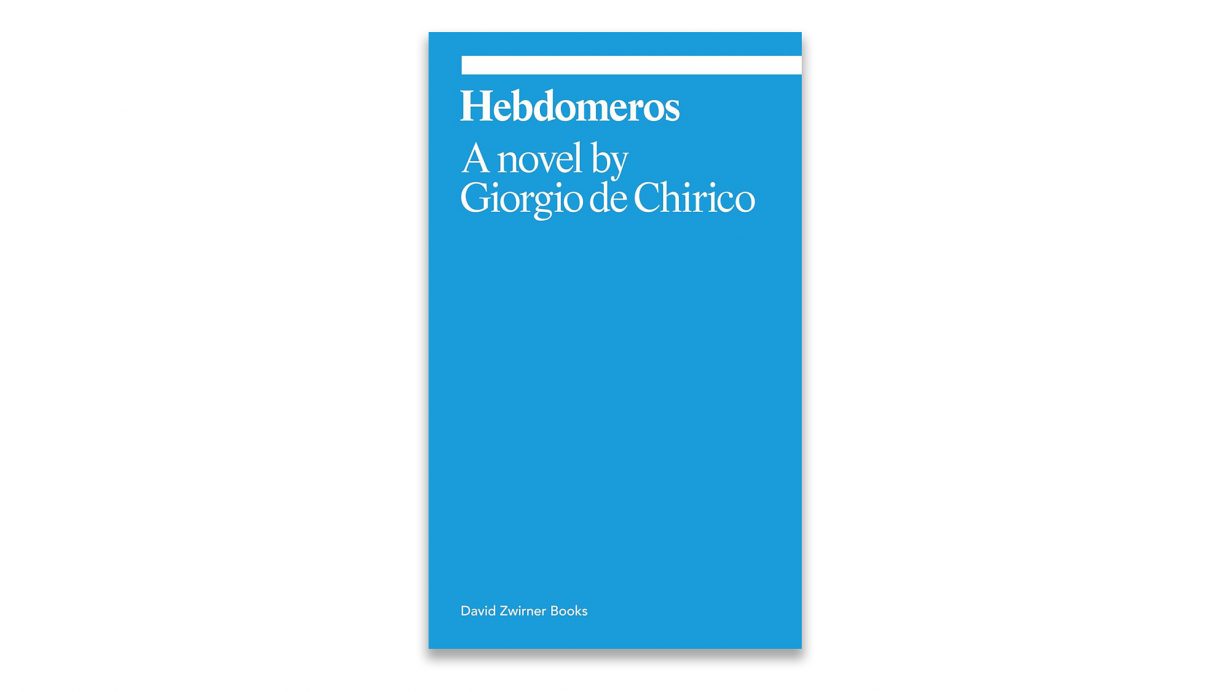Reading this revised translation of the artist’s novel, Hebdomeros, feels distinctly hallucinogenic

This revised translation of Giorgio de Chirico’s famous if confounding 1929 novel reveals the artist’s first and only book-length project to be an essential foil to his well-known metaphysical paintings – not merely a transposition of de Chirico’s visual forms into language, but a complementary project of untimely modernism unto itself. This untimeliness, the juxtaposition of the already-outmoded and the not-yet-emergent, is reflected in de Chirico’s entire oeuvre. Like his art, the narrative of Hebdomeros proceeds as a cascade of prescient memories.
De Chirico’s concern for the untimely was, like so much else, deeply influenced by Friedrich Nietzsche, whose writings offered the young artist a path though the sclerotic culture of fin de siècle Europe. Although de Chirico wrote in French, one finds Nietzschean keywords like stimmung, left untranslated from the German, sprinkled throughout Hebdomeros. What de Chirico understood better about Nietzsche than most was how the slips and digressions riddling the philosopher’s late works – The Antichrist and Ecce Homo (both written in 1888), for example, feature asides regarding bowel movements and birds – were essential to his most brilliant, blinding observations. Hebdomeros, the titular figure of de Chirico’s novel, is something of a pseudo-philosopher. Part Zarathustra, part Hermann Hesse’s Siddhartha, part gratuitous self-insert (like de Chirico and Nietzsche, he suffers from maladies of the gut), he monologues about topics both embarrassing (he detests women eating pickles) and beautiful (maritime ports at sunrise). Full of contradictions, our hero expresses delight in harsh sunlight but an aversion to heat; a distaste for people but an affection for humanity; an attraction to the symbolic value of the colour white layered with a fear of that very colour, a condition he terms ‘leukophobia’.
It might help to understand Hebdomeros’s quirks in light of those found in chivalric tales. Indeed, de Chirico’s text eschews the conventions of a modern novel for ruminations on complex symbols; thus, it has less in common with its contemporaries than with the likes of Yvain (c. 1180) or Le Roman de la Rose (c. 1230–75), medieval works in which the promulgations of figures for thought precede plot.
Like many chivalric tales, Hebdomeros is also startlingly uneven in tone, pacing and focus. It opens with an almost uninterrupted stream of consciousness – recollections of Hebdomeros’s childhood, travels and teachings – that halfway through the book transforms into more conventional prose, with established settings and continuity in speakers and action. The work then quickly becomes a found text (a mysterious political poster) before ebbing back into a tidal wash of description covering everything from the rising sun to the memory of Hebdomeros’s father. It rushes to a conclusion that breaks into conversation, almost slipping into an epistolary form, before ending much as it began – in ellipsis.
Reading Hebdomeros feels hallucinogenic, like standing at the edge of a dream, given how many details proliferate, unmoored from narrative, building across multiple pages only to collapse in a single clause. Perhaps this is why the book received so much praise from the Surrealists upon its first publication, though this support was not without its edge. Following the First World War, the Surrealists had attacked de Chirico mercilessly for what they perceived as his artistic stultification; in 1928, they’d gone so far as to declare him dead in an issue of La Révolution Surréaliste. André Breton, who’d (correctly) accused de Chirico of reproducing his own pre-1918 work for resale in the 1920s, claimed that the novel, too, was an artefact of earlier times. It was a petty accusation, of course, but one that also rang true: Hebdomeros is older than it appears. Not literally, maybe, but in substance the work proves older even than Cervantes.
Hebdomeros: A Novel by Giorgio de Chirico. David Zwirner Books, £10.95 (softcover)
From the May 2025 issue of ArtReview – get your copy.